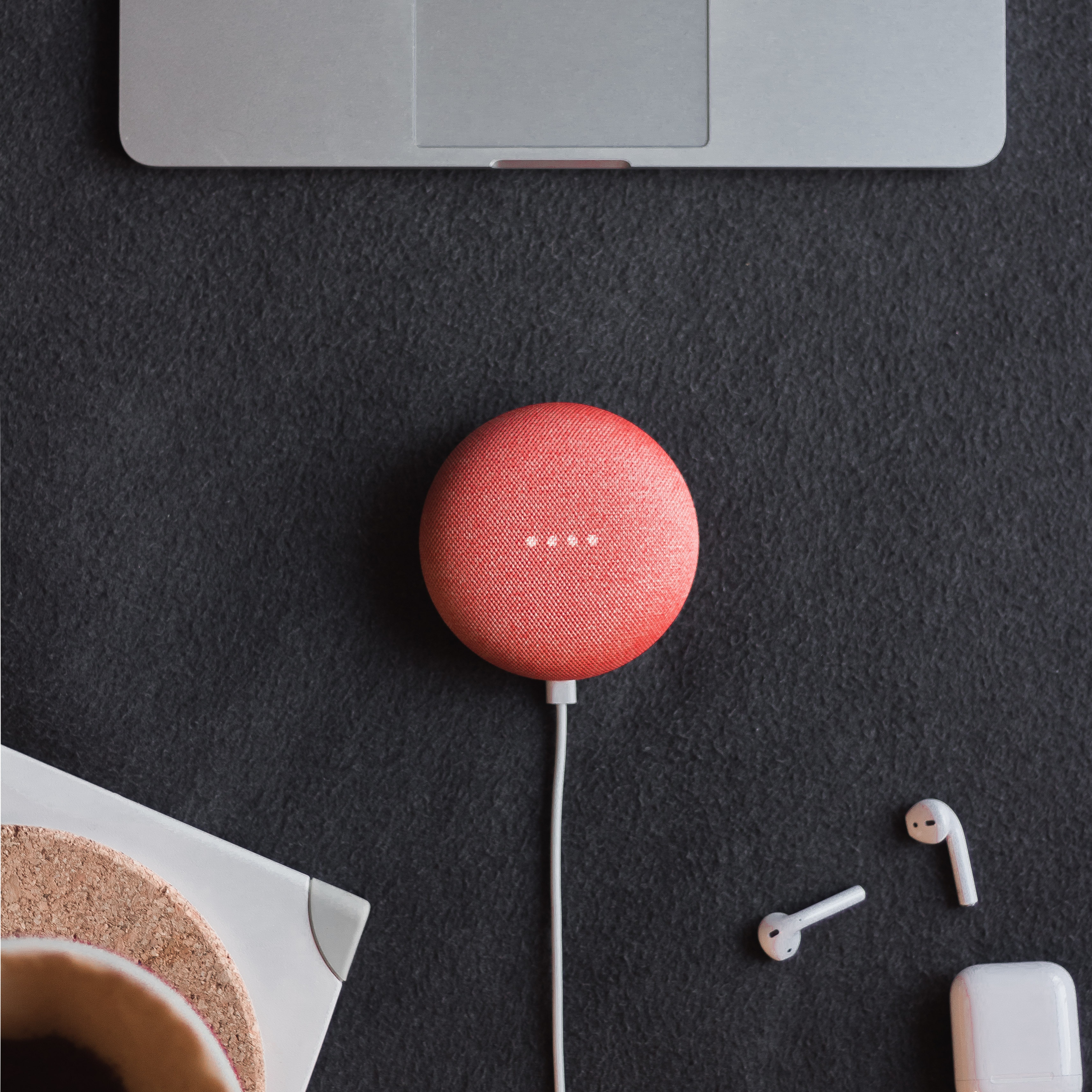Blog Post
Ok Google, What's That Sound?
Ok Google, What's That Sound?
Posted on
13 Mar 2018
Category
UX Sound Design
13 Mar 2018 • UX Sound Design

UX Sounds
The sound of your alarm clock ring in the morning, Facebook Messenger pings throughout the day or the classic MTA subway cars “chime” before their doors close. These are all examples of user experience sound playing a role in your day. But have you ever stopped to ask yourself, “What are these sounds?” Furthermore, how are these sounds made? What sort of strategy goes into creating these short and often times branded interactions?Information travels fast often without a screen directly in front of our eyes. During these moments, non-verbal audio cues are the easiest and fastest way of grabbing a users attention and providing information. The smartest and most effective brands today know that these sonic moments are key opportunities to deliver their brand message to the outside world.

Standard Practice
Unlike visual symbolism and iconography, there is no official rule book or best practice for sound. There is no equivalent of Unicode (computing industry standard for visual representation of text and glyphs) or ISO’s international language of graphical symbols. Sure, there may be some baseline accessibility but we are currently severely lacking in any sort of universal design guidelines.Luckily, however, there are evolving trends and tools that can make good UX sound design great. When building an audio user experience, apply these design strategies to create iconic sonic moments for your brand.
Skeuomorphism
Skeuomorphism is a design concept in which items are made to resemble real-world counterparts. An example of digital audio skeuomorphism is the Apple MacOS trash can sound. It comes from the real-world sound of pitching something into a small metal wastebasket. It is a common, recognizable sound and thus communicates the interaction simply and effectively. Skeuomorphism is the most straightforward form of "earconography."Users already have deep-rooted associations with many real-world sounds. If you close your eyes and hear a camera flash, a car speeding by or a church bell, most people are able to identify these sounds with the correct sources. If you are making a mobile camera app, the obvious choice in shutter sound might be the sound of an existing, physical camera because the association is already commonplace, however in the current landscape, it may not be enough to differentiate from the competition.
The empty trash sound on MacOS is a perfect example of skeuomorphism in the context of UI sounds.
The empty trash sound on MacOS is a perfect example of skeuomorphism in the context of UI sounds.
MacOS "Empty Trash"
iOS "Camera Shutter"
Apple seized the opportunity to utilize skeuomorphism as the basis of their audio branding early enough to claim it as their own. Most smartphone users associate the realistic camera shutter sound in iOS to be Apple (even though it’s really just the sound of a Canon SLR).
Sound & Haptics
Another important form of UX sound design is simulated haptic feedback. As more and more of our world moves into the digital realm, we often miss out on the natural sonic qualities of hapticity. Interactions that would otherwise make sound in the real world, now are silent. These interactions are perfect opportunities for brands to develop the character of their digital platforms. Brands now have complete control over the sound and feel of buttons and dials inside products. Volume up and down, keyboard clicks and menu navigation are only a few general examples of where audio supplement or even replace haptic engines to enhance the user experience and strengthen the branding of a product.

Gestural Intuition
Texture and timbre only reflect one half of the Audio UX® design process that we call the Audio Aesthetic. The other half is the gestural composition. What is the range of pitch? What direction is the sound moving? How many notes are there? These are three important questions a UX sound designer should ask when developing the gesture of a UX/UI sound. While there aren’t public standard practices or guidelines in place for Audio UX®, there is a growing library of common practice in the market. For example, downward gestures are most often used to articulate conclusion or negativity such as power off or battery low, respectively. Upward gestures typically communicate the beginning of an experience or positivity, such as power on, mic on, or success.For example, the listening sound (i.e. "Speak Now") found in the Google Assistant is a two-note gesture (upward octave) which gives the sound a sense of beginning or opening which encourages the user to respond. Harmony is also used to indicate the positivity or conclusiveness of an interaction. For example, a sound that is based on the first chord of a key (fondly called the “home” chord) usually gives the experience a feeling of completion.
The iconic Google Assistant VUI sounds.
The iconic Google Assistant VUI sounds.
Speak Now
Got It
Future Consideration
With the rise of voice experience, IoT and Home OS, communication between users and the products they love is becoming audio-centric. Thus, the care and consideration that brands take towards audio design principles and standards will mean the difference between auditory cacophony and a transformative audio user experience.So, what’s really the behind these sounds? We are. With years of experience in the field, evolving strategy, and endless imagination, Audio UX® is shaping the future of sound design.


